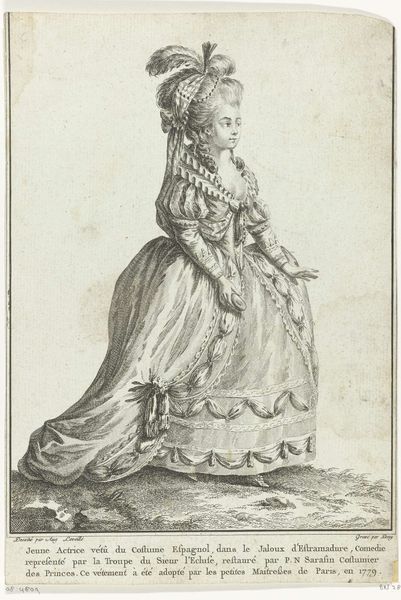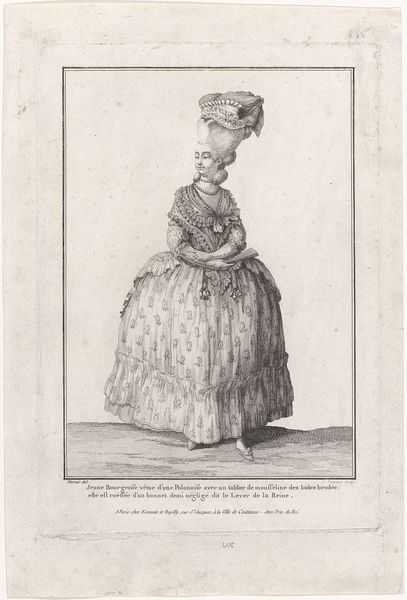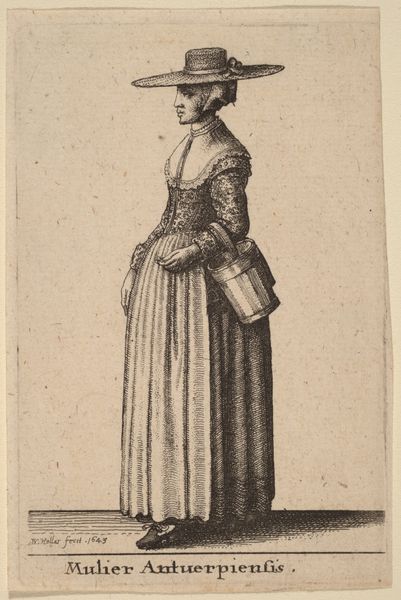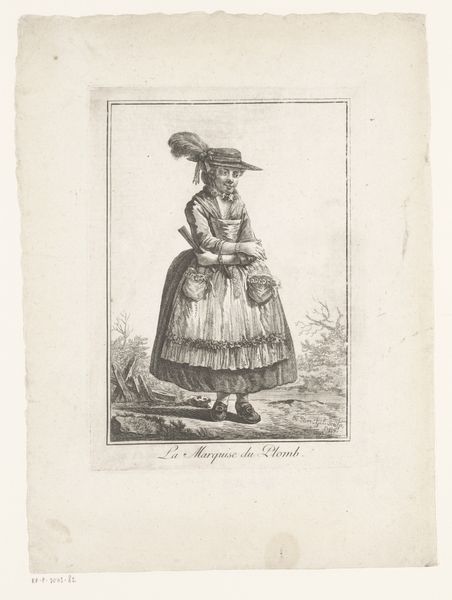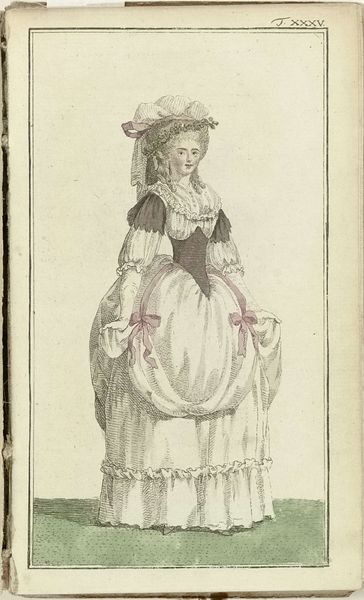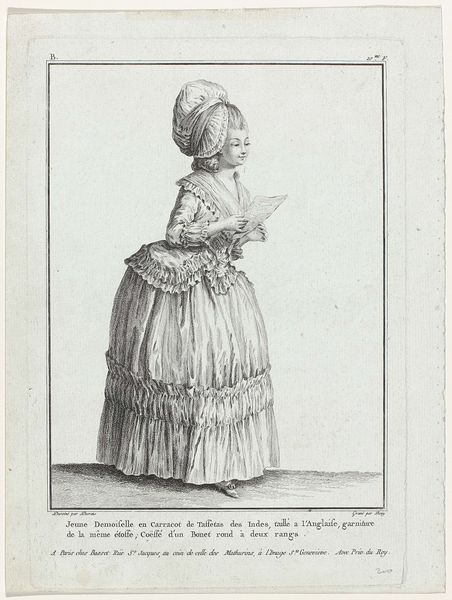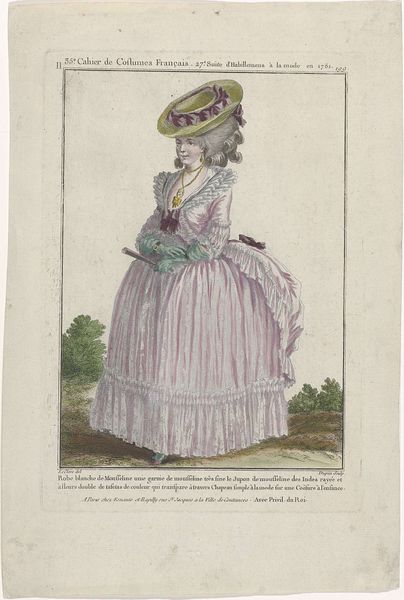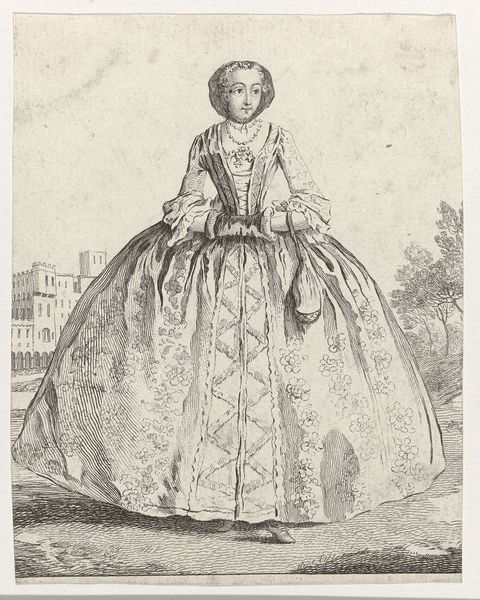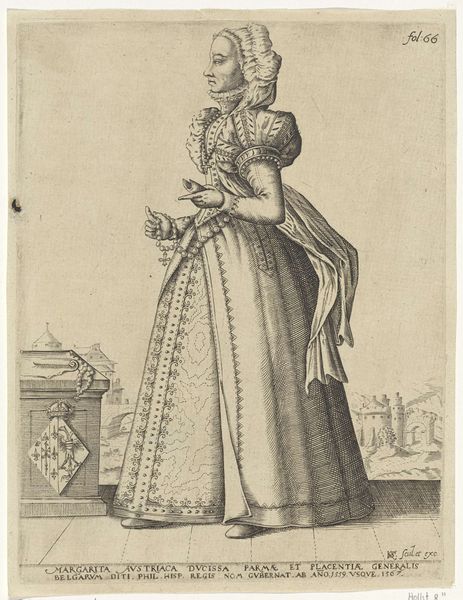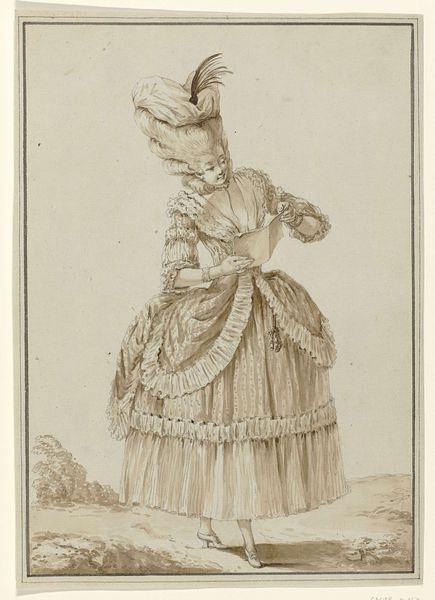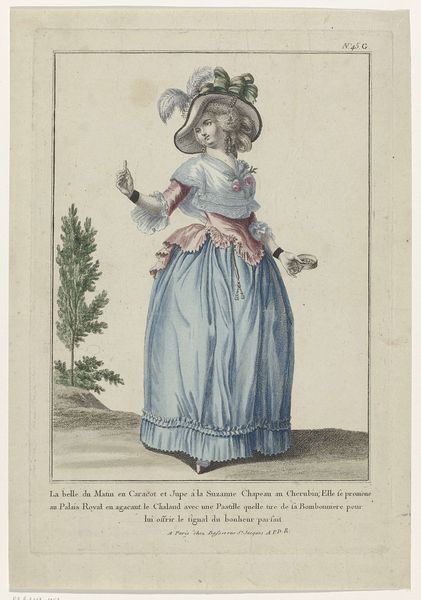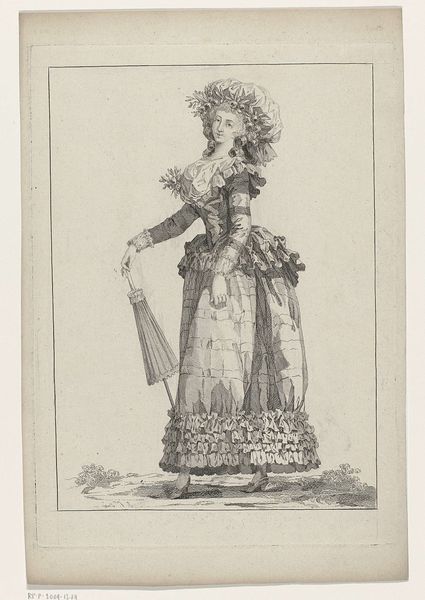
Gallerie des Modes et Costumes Français, 1781, II 199 (bis) : Robe blanche de Mousselin (...) 1781
0:00
0:00
nicolasdupin
Rijksmuseum
Dimensions: height 281 mm, width 198 mm
Copyright: Rijks Museum: Open Domain
Curator: We are looking at an engraving from 1781, titled "Gallerie des Modes et Costumes Français, 1781, II 199 (bis) : Robe blanche de Mousselin (...)" by Nicolas Dupin, currently residing at the Rijksmuseum. Editor: My first thought? Ethereal. The monochrome engraving captures a lightness, almost a dreamlike quality. It makes you wonder about the woman wearing such a confection. Curator: Indeed. Dupin captures the height of Rococo fashion here, but what interests me most is the description. Note the emphasis on "mousselin," a fine cotton fabric. Its production was intricately linked to colonial trade routes and exploitative labor in India. Editor: You are right, one almost overlooks that looking at it now. The lines certainly denote something precious, though. The dress’s very form with that dramatically wide skirt is itself a statement, an almost architectural feat achieved through layers of material and construction. I wonder how the textile composition works? Curator: It seems Dupin specifies mousseline lined with "taffetas de couleur" visible underneath. This layering suggests not only opulence but an active engagement with texture and light. Consider the dress as a social signifier, reflecting the wearer's status but also her access to and participation in global trade networks. The dress becomes an item, a social marker of class, fashion, wealth. Editor: That’s interesting to consider, particularly from a structural standpoint. The dress appears so light in the image. What about the overall effect, though? Doesn’t the somewhat restrained palette draw all the more focus onto the details and structure itself, or is it rather a visual representation of excess during a pre-Revolutionary era, something extravagant? Curator: Absolutely. It's a complicated picture. The delicate aesthetic obscures a reality of resource extraction, labour exploitation, but as it depicts a fashionable noblewoman, and nobility in those times were consuming luxuries like these items while not being held accountable. Dupin, in capturing the nuances of the robe’s design and detailing, simultaneously records and comments on those economic structures and social inequities. It is truly eye-opening to look through a new context. Editor: Indeed, thinking through materiality enriches the understanding! This quick look prompts new perspectives on late 18th-century French culture.
Comments
No comments
Be the first to comment and join the conversation on the ultimate creative platform.
